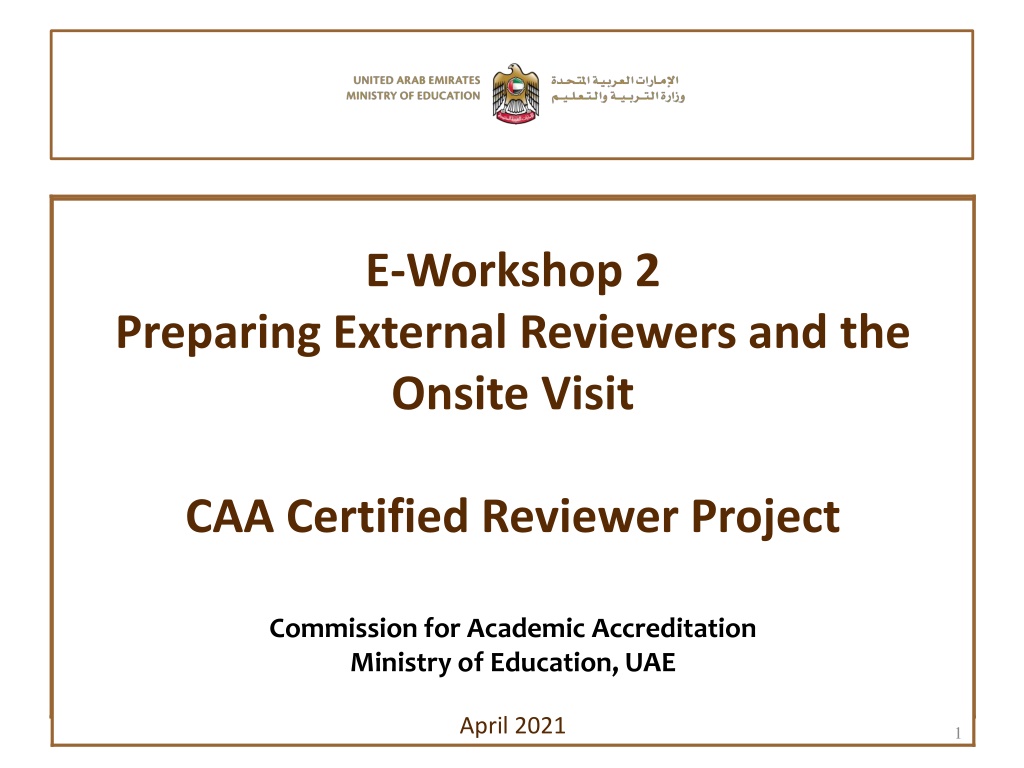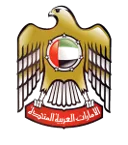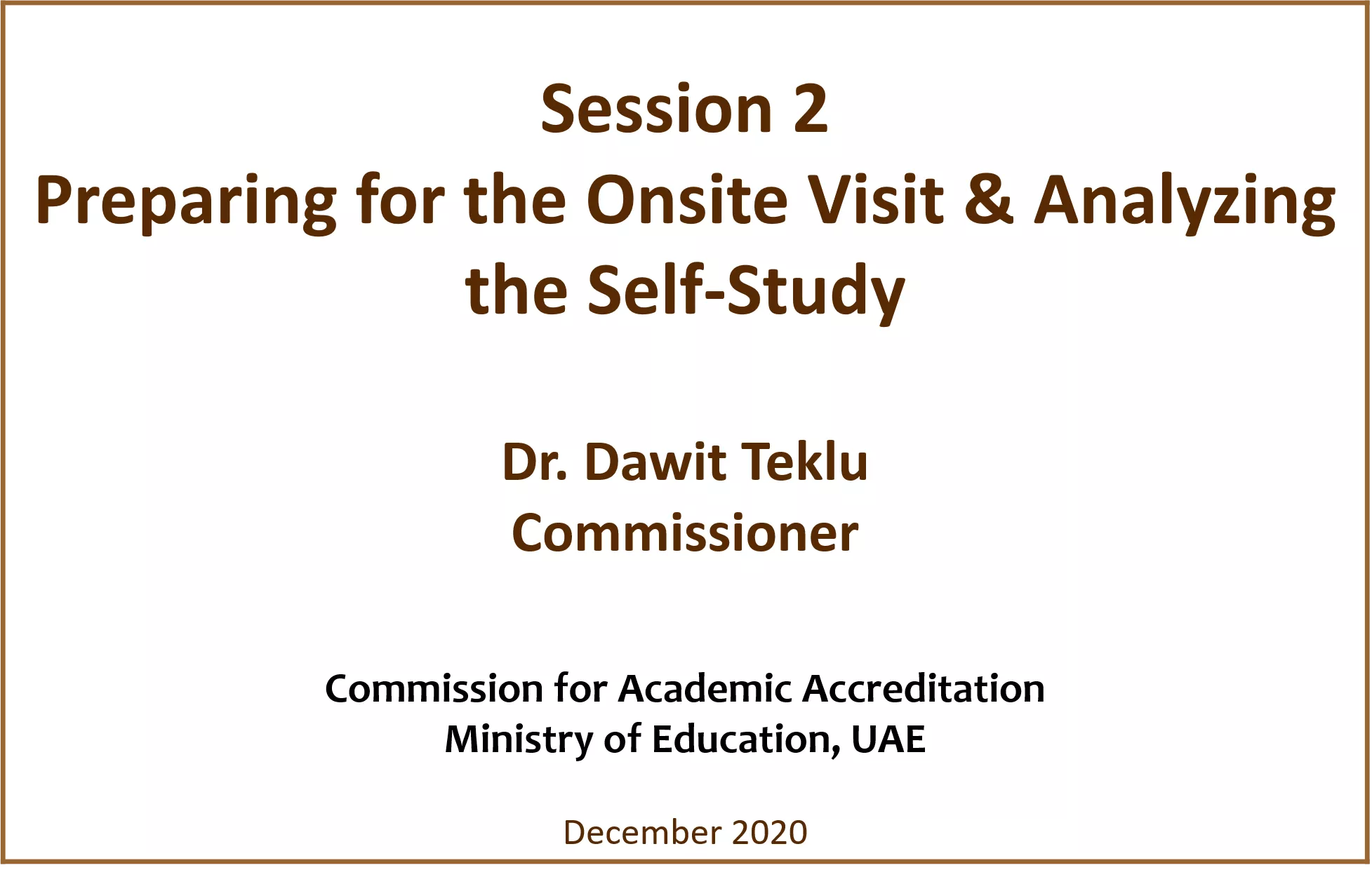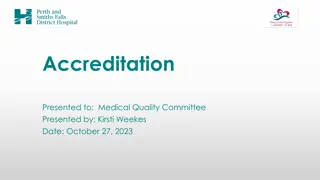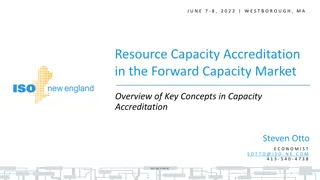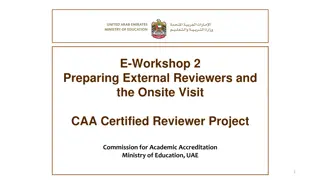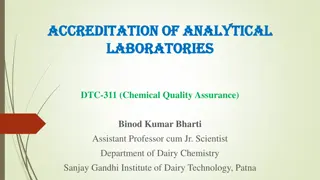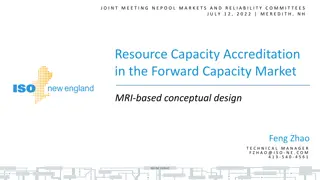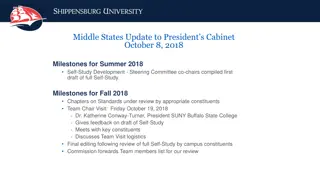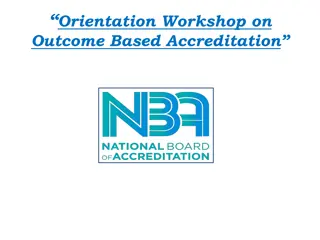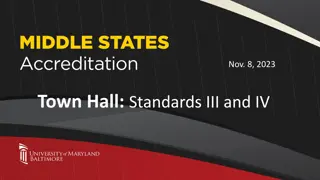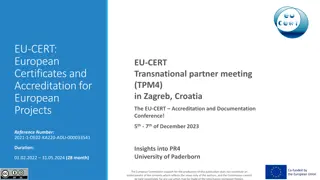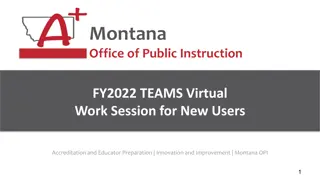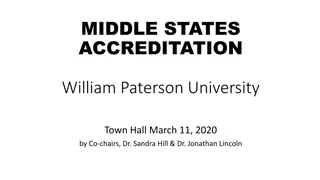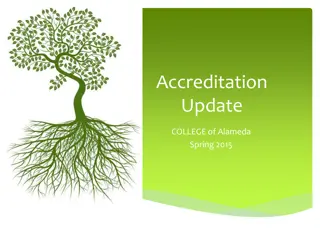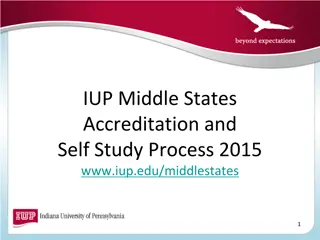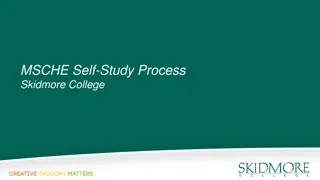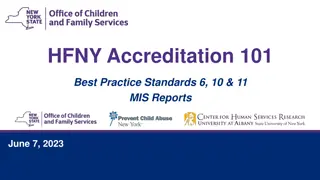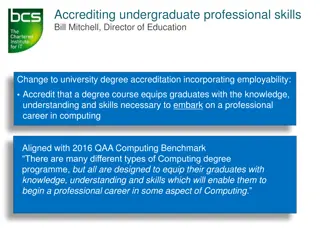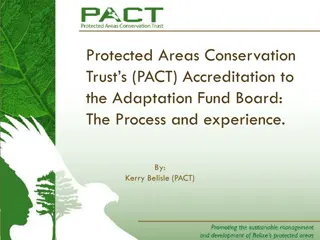Enhancing Academic Accreditation Process: Onsite Visit and Self-Study Analysis
The e-workshop sessions focus on preparing external reviewers, analyzing self-study documents, and understanding the purpose of onsite visits in academic accreditation. Topics covered include self-study definition, evaluating weaknesses identified by reviewers, and the importance of the onsite visit in verifying self-study information, identifying gaps, and offering recommendations.
Download Presentation

Please find below an Image/Link to download the presentation.
The content on the website is provided AS IS for your information and personal use only. It may not be sold, licensed, or shared on other websites without obtaining consent from the author. Download presentation by click this link. If you encounter any issues during the download, it is possible that the publisher has removed the file from their server.
E N D
Presentation Transcript
E-Workshop 2 Preparing External Reviewers and the Onsite Visit CAA Certified Reviewer Project Commission for Academic Accreditation Ministry of Education, UAE April 2021 1
Session 2 Preparing for the Onsite Visit & Analyzing the Self-Study Dr. Dawit Teklu Commissioner Commission for Academic Accreditation Ministry of Education, UAE 2 December 2020
Outline Introduction Purpose of the Onsite Visit Analyzing the self-study Preparing for the Onsite Visit:HEI Preparing for the Onsite Visit: CAA Summary 3
Introduction Presentation 20 minutes Experience of an External Reviewer -20 minutes Q & A /Discussion-20 minutes 4
Self-Study Defined The Self-Study is a self-critical, evidence based and analytical document which clearly shows the ways in which the institution is addressing the Standards, identifies strengths and weaknesses of the academic programs, and outlines plans for addressing the weaknesses. Procedural Manual for Renewal of Program Accreditation page 4 5
Analyzing The Self-Study The Self-Study plays a significant role in meeting the Expectations of the CAA. Does it Comply with the Standards Are the responses to the Standards thorough and Complete Does it identify the changes made since the initial accreditation of the program Does it address future trends, opportunities and challenges Are the supporting documents properly labeled and identified 6
Self-Study Weaknesses Idenified by Reviewers Lack of Analysis Don t follow the CAA specified format Present very little or no evidence Don t tell the whole story Poorly put together Spelling and Grammatical Errors Poorly labeled Appendix and Supporting Documents 7
Purpose of the Onsite Visit Learn more about the Program & HEI under review Verify the story told in the Self-Study Identify gaps Offer Suggestions (Advisory) Specify Requirements ( Must) 8
PREPARING FOR THE ONSITE VISIT: THE INSTITUTION Submit a Complete Application including one hard copy and three Electronic copies. Please Refer to the Procedural Manual of Program Accreditation (PMRPA) PP. 5-7 Deadlines for the submission of Applications are given on page 7 of the PMRPA 9
PREPARING FOR THE ONSITE VISIT: THE INSTITUTION Once the Visit dates are set Prepare a work room for the visiting team Make copies of the self-study available in the work room Make all the Institutional Documents available in the work room Coordinate the agreed upon meeting schedule 10
PREPARING FOR THE ONSITE VISIT: THE INSTITUTION Provide any additional documents/information requested by the review team Schedule any additional meeting requested by the review team Arrange for visits of branch campuses if any 11
PREPARING FOR THE ONSITE VISIT: THE CAA Director Assigns a Commissioner to work with the HEI Commissioner reviews the Self-Study for completeness and readiness for review Commissioner works with the HEI on identifying mutually convenient visit dates Commissioner recruits Experts/ERTs appropriate to the program under review 12
PREPARING FOR THE ONSITE VISIT: THE CAA Commissioner works with the CAA logistics team on all travel and lodging arrangements Commissioner works with the HEI on the visit schedule, including interviews and the logistics of the visit Commissioner requests any additional information that was not available to the ERT Commissioner in consultation with the HEI revises the visit schedule as necessary 13
In Summary The Onsite visit is based on the Self-Study The purpose of the onsite visit is to learn more about the program and the institution and come to a decision about the program The Self-Study must Address all the Standards It has to be Analytical, Self-Critical, Evidence Based Identifies Strengths & Weaknesses of the Program Has to Include Plans for Addressing weaknesses of the Program 14
Practical Session/ Group Exercise Group Assignment Analyzing the Self-Study Please refer to the Sample Self-Study included in your workshop material. Reflecting on the material presented please address the following questions Does the Self-Study meet the definition provided in the PMRPA ? If Yes how? If no what is missing? Based on your reading of the Self-Study what additional questions would you raise during the onsite visit Identify any additional information the institution needs to provide to help you arrive at a decision about the program 16
